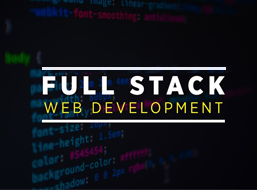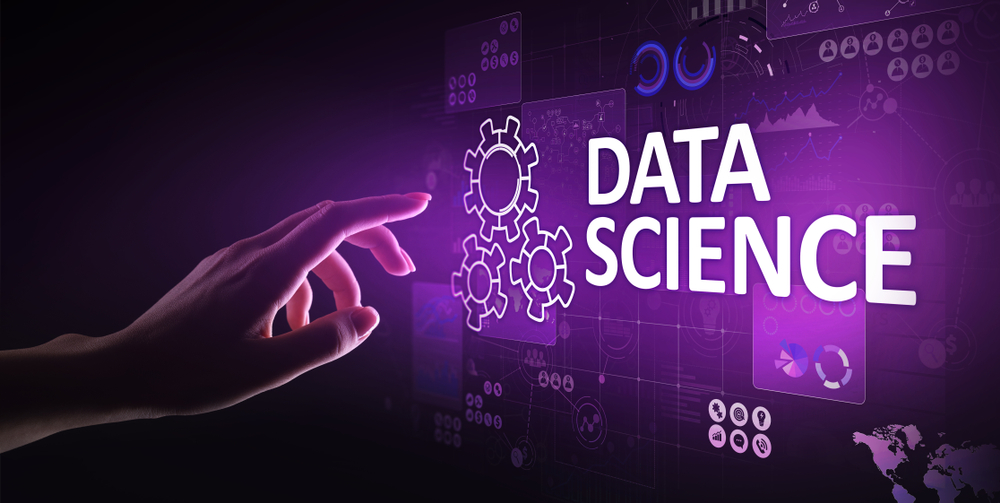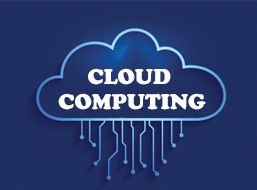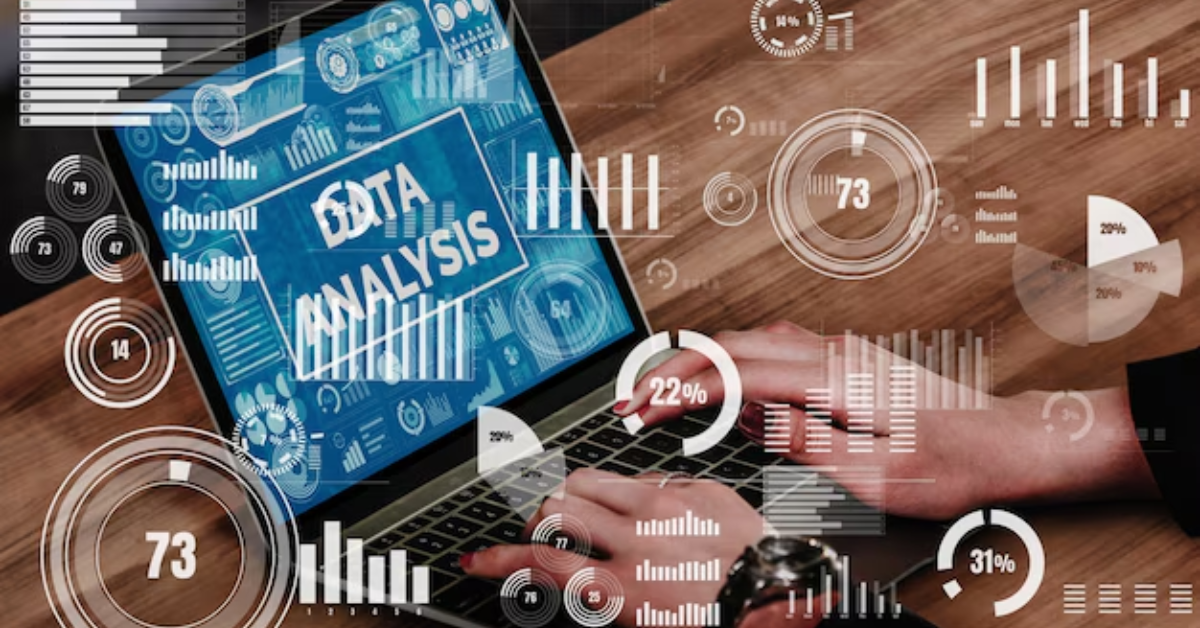Top Business Analyst Interview Questions and Answers
1. What is a Business Analyst?
- A Business Analyst (BA) is a professional who helps organizations improve their processes, systems, and operations. They work by identifying business needs, gathering requirements, analyzing processes, and recommending solutions to optimize efficiency. A BA often bridges the gap between business stakeholders and technical teams.
2. What are the key skills required for a Business Analyst?
- Key skills for a Business Analyst include strong analytical thinking, problem-solving, communication, and interpersonal skills. A BA must be proficient in requirements gathering, process modeling, data analysis, and project management. They should also have a good understanding of business processes and IT systems.
3. Explain the difference between functional and non-functional requirements.
- Functional requirements describe what the system should do, such as user authentication or data processing. Non-functional requirements define how the system should perform, such as performance, security, scalability, and usability. Both are critical for the system's success, ensuring it meets both business needs and quality standards.
4. What is requirements gathering, and how do you perform it?
- Requirements gathering is the process of collecting and documenting the business needs of stakeholders. Methods include interviews, surveys, workshops, document analysis, and observing current processes. A BA should prioritize communication and clarification with stakeholders to ensure accurate and complete requirements.
5. What is a Use Case?
- A Use Case describes how users interact with a system to achieve a specific goal. It outlines the steps involved in the interaction and identifies potential exceptions or errors. Use cases help define system requirements from a user's perspective, providing clarity to both business and technical teams.
6. What is a Business Requirements Document (BRD)?
- A Business Requirements Document (BRD) is a formal document that outlines the business needs, objectives, and requirements of a project. It serves as a reference throughout the project lifecycle and helps ensure that the delivered solution aligns with the organization's goals and stakeholder expectations.
7. What is a Functional Requirements Document (FRD)?
- A Functional Requirements Document (FRD) details the system features and functionalities required to fulfill the business requirements outlined in the BRD. It is a more technical document that serves as a blueprint for developers and testers to build and validate the system.
8. What is the purpose of a SWOT analysis?
- A SWOT analysis is a strategic planning tool used to assess the Strengths, Weaknesses, Opportunities, and Threats of a business or project. It helps business analysts identify internal and external factors that can influence the success of a project or business initiative.
9. How do you handle changing requirements during a project?
- Managing changing requirements involves clear communication and documentation. A BA should prioritize requirements based on business value, and use change control processes to assess the impact of changes. It’s important to work closely with stakeholders to determine the most effective course of action, ensuring alignment with project goals and timelines.
10. Explain the role of a Business Analyst in Agile methodology.
- In Agile, the Business Analyst collaborates with the product owner and development team to define and prioritize the product backlog. The BA helps gather and refine user stories, ensuring that the requirements are clearly understood and addressed in sprints. They also facilitate communication between stakeholders and the development team.
11. What is a Business Process Model and Notation (BPMN)?
- BPMN is a graphical representation for specifying business processes in a workflow. It uses standardized symbols and notation to depict processes, making it easier for stakeholders to understand process flows, roles, and interactions. BPMN is widely used for process modeling in business analysis.
12. How do you ensure the quality of the requirements gathered?
- To ensure quality, requirements should be clear, concise, and unambiguous. The BA should validate requirements with stakeholders, ensuring that they are complete and align with business goals. Requirements should also be testable and traceable throughout the project lifecycle.
13. What is the difference between a Business Analyst and a Systems Analyst?
- A Business Analyst focuses on understanding business processes, gathering requirements, and recommending solutions. A Systems Analyst typically works on the technical side, focusing on designing and implementing IT systems that support business needs. Both roles overlap but differ in their focus areas.
14. What tools do Business Analysts use for documentation?
- Business Analysts use a variety of tools for documentation, such as Microsoft Word, Excel, and PowerPoint for creating documents, charts, and presentations. They may also use specialized tools like Microsoft Visio for process modeling, JIRA for Agile project management, and Confluence for collaboration and documentation.
15. What is a requirement traceability matrix (RTM)?
- A Requirement Traceability Matrix (RTM) is a document that maps and traces the relationships between business requirements and test cases. It ensures that all requirements are tested and validated, providing a way to track the progress of testing and ensure that the solution meets all business needs.
16. What is a Gap Analysis?
- Gap Analysis is a technique used to identify the gap between the current state and the desired future state of a business or system. It helps businesses understand where they are falling short and outlines the steps needed to bridge that gap, often through process improvements or system enhancements.
17. What is a user story in Agile?
- A user story is a short, simple description of a feature or functionality from the perspective of the user or customer. It typically follows the format: "As a [type of user], I want [an action] so that [a benefit]." User stories help define the work that needs to be done and focus on delivering value to the customer.
18. What is the importance of stakeholder management in business analysis?
- Stakeholder management is crucial because stakeholders influence project success. A BA must identify, communicate, and engage with stakeholders throughout the project to understand their needs, manage expectations, and ensure alignment with business objectives. Proper stakeholder management helps mitigate risks and ensures buy-in.
19. How do you prioritize requirements?
- Requirements are prioritized based on factors such as business value, urgency, dependencies, and impact on the project. Techniques like MoSCoW (Must have, Should have, Could have, Won't have) or weighted scoring can help prioritize requirements effectively, ensuring that critical requirements are addressed first.
20. What is the difference between a use case and a user story?
- A use case describes a sequence of interactions between a user and a system to achieve a specific goal, often with detailed steps and exception handling. A user story is a high-level description of a desired feature or functionality from the user’s perspective, typically with less detail, and focuses on delivering value in Agile development.
21. What is the purpose of process modeling?
- Process modeling is used to visualize and analyze business processes, enabling better understanding, identification of inefficiencies, and opportunities for improvement. It helps stakeholders communicate and collaborate on process design and optimization, ensuring that business objectives are met.
22. What is a requirements elicitation technique you use frequently?
- Common techniques for requirements elicitation include interviews, workshops, surveys, brainstorming sessions, document analysis, and observation. Each technique is selected based on the project context, stakeholder availability, and the complexity of the requirements.
23. What is the role of a Business Analyst in testing?
- A BA plays a key role in testing by ensuring that the requirements are correctly understood and implemented. They may help develop test scenarios and cases, validate that the system meets business needs, and ensure that defects are tracked and addressed. BAs also act as a liaison between business stakeholders and the testing team.
24. How do you handle a situation where there is a disagreement among stakeholders regarding requirements?
- When disagreements arise, a BA should facilitate discussions between stakeholders to understand their concerns and priorities. They should focus on clarifying the business goals, ensuring that the requirements align with the overall strategy, and mediate to reach a compromise or solution that satisfies all parties.
25. What is the purpose of an Impact Analysis?
- An Impact Analysis evaluates the potential effects of a change in a project or business environment. It helps identify areas that may be affected, such as costs, resources, timelines, and other requirements. The analysis ensures that changes are implemented efficiently and that potential risks are mitigated.
26. What are the steps involved in requirement validation?
- Requirement validation involves reviewing and confirming that the gathered requirements accurately reflect the business needs and are complete, consistent, and feasible. Steps include reviewing requirements with stakeholders, checking for conflicts, ensuring they are testable, and confirming that they align with business goals.
27. How do you manage conflicting priorities from different stakeholders?
- Conflicting priorities can be managed by understanding the business objectives of each stakeholder, facilitating discussions to identify the most critical needs, and prioritizing requirements based on business value. A BA may need to negotiate or recommend alternative solutions to ensure that the project stays on track and aligned with key goals.
28. What is the purpose of prototyping in requirements gathering?
- Prototyping involves creating an early model of a system or process to visualize requirements and gather feedback. It helps stakeholders refine their needs and clarify expectations before full development begins, reducing the risk of misunderstandings or incomplete requirements.
29. What are some common challenges faced by a Business Analyst?
- Common challenges include managing stakeholder expectations, dealing with scope creep, gathering complete and accurate requirements, and ensuring alignment between business goals and technical solutions. Communication issues, tight project timelines, and changes in requirements are also common hurdles.
30. What is the role of a Business Analyst in a project lifecycle?
- A Business Analyst is involved throughout the project lifecycle, from initiation to closure. They work to define business needs, gather requirements, and ensure that solutions are developed, tested, and implemented in line with those requirements. BAs also monitor and evaluate the project’s success against its objectives.
31. How do you assess the feasibility of a project or solution?
- Feasibility is assessed by evaluating the project’s technical, operational, and financial aspects. A BA gathers input from technical teams to understand technical feasibility, analyzes resources and timeframes for operational feasibility, and assesses costs, ROI, and other financial factors to determine financial feasibility.
32. What is a Data Flow Diagram (DFD)?
- A Data Flow Diagram (DFD) visually represents how data moves through a system. It shows the processes that transform data, the data stores where information is kept, and the data sources and destinations. DFDs help business analysts understand system operations and identify areas for improvement.
33. What is the significance of business rules in business analysis?
- Business rules define the specific conditions or constraints within which business processes must operate. They ensure consistency, compliance, and clarity in operations and decision-making. BAs document and analyze business rules to ensure that the system or solution aligns with organizational policies and regulations.
34 .What is meant by Agile Requirements?
- Agile requirements are flexible, evolving, and delivered iteratively. Unlike traditional waterfall approaches, Agile focuses on delivering small, functional increments in each sprint. Requirements are expressed as user stories, and the project adapts based on stakeholder feedback and changing needs throughout the development process.
35. What is the difference between Waterfall and Agile methodologies in business analysis?
- In Waterfall, the project follows a linear, sequential process with distinct phases like planning, analysis, design, implementation, and testing. In Agile, the process is iterative, with frequent feedback loops, shorter cycles, and a focus on delivering value in small, incremental pieces. BAs in Agile must adapt to changes quickly and continuously refine requirements.
36. How do you perform Root Cause Analysis?
- Root Cause Analysis (RCA) is a technique used to identify the underlying cause of a problem. It typically involves data collection, analyzing trends or patterns, and using methods like the 5 Whys or Fishbone Diagram to drill down into the issue. Once the root cause is identified, the BA can recommend corrective actions.
37. How do you manage and handle documentation during a project?
- Documentation is crucial for tracking requirements, changes, and project progress. A BA should ensure that all documents are well-organized, clear, and accessible. They use version control systems to track changes and ensure that all stakeholders have the most up-to-date information. Regular reviews and approvals help maintain document quality.
38. What is the purpose of a Functional Design Document (FDD)?
- A Functional Design Document (FDD) provides detailed information on the system's functionality and how it will meet the requirements. It serves as a blueprint for developers, outlining system behavior, user interactions, and business rules. The FDD ensures that the solution is built in alignment with the business's needs and expectations.
39. How do you ensure that the solution meets the business needs?
- Ensuring the solution meets business needs involves continuous collaboration with stakeholders, validating requirements at every stage of the project, and performing regular reviews and tests. The BA should also monitor the solution’s performance after deployment, gathering feedback and making necessary adjustments.
40. What is change management in business analysis?
- Change management involves preparing, supporting, and helping individuals and teams navigate changes in processes, systems, or organizational structures. A BA plays a role in assessing the impact of changes, communicating with stakeholders, and ensuring that changes align with business goals and objectives.
41. How do you handle resistance to change during a project?
- Handling resistance involves understanding the root causes of the resistance and addressing them through communication, education, and support. The BA should highlight the benefits of the change, involve key stakeholders early in the process, and provide adequate training and resources to help teams adjust.
42. What is the significance of stakeholder analysis?
- Stakeholder analysis helps identify and prioritize the individuals or groups who have an interest in or are affected by the project. Understanding their needs, expectations, and level of influence helps the BA develop a strategy for engaging stakeholders and ensuring their concerns are addressed throughout the project.
43. What is a Business Case?
- A Business Case outlines the justification for a project, providing reasons for why it should be undertaken and the expected benefits. It typically includes financial projections, risk assessments, and an analysis of alternatives. The Business Case helps stakeholders evaluate the value of the project before making decisions.
44. What is User Acceptance Testing (UAT)?
- User Acceptance Testing (UAT) is a phase where the end users test the system to ensure it meets their needs and expectations. The BA helps facilitate UAT by preparing test scenarios, coordinating with users, and ensuring that the system functions as expected before final approval.
45. How do you manage scope creep?
- Scope creep occurs when the project’s scope expands beyond the initial plan. To manage it, the BA ensures that all changes go through a formal change control process. They assess the impact of changes, communicate with stakeholders about potential delays or additional costs, and ensure that any adjustments align with project goals.
46. What is a Data Dictionary?
- A Data Dictionary is a centralized repository of data definitions, structures, and relationships within a system. It helps business analysts, developers, and other stakeholders understand how data is used, ensuring consistency and clarity in data handling throughout the project.
47. What is a RACI matrix?
- A RACI matrix is a tool used to define roles and responsibilities within a project. It clarifies who is Responsible, Accountable, Consulted, and Informed for each task or deliverable. The RACI matrix helps streamline communication and ensure that everyone understands their role in the project.
48. What is the difference between a project charter and a business case?
- A project charter formally authorizes the project, outlining its objectives, scope, stakeholders, and resource requirements. A business case justifies the need for the project by providing a cost-benefit analysis and explaining how the project aligns with business goals. Both documents are critical but serve different purposes.
49. What is a change request?
- A change request is a formal proposal to modify the scope, objectives, or deliverables of a project. It outlines the changes needed and provides a rationale for the change, including an impact assessment. Change requests are reviewed by stakeholders and the project team before being approved or rejected.
50. What is a system integration test (SIT)?
- System Integration Testing (SIT) verifies that different components of a system work together as expected. It focuses on ensuring that individual modules or systems interact seamlessly, and any integration points or data flows between them function correctly. SIT helps identify issues with data exchange or system interoperability.
51. What are key performance indicators (KPIs), and why are they important?
- KPIs are measurable values that indicate how well a business or project is achieving its objectives. They help business analysts and organizations track progress, assess performance, and make informed decisions. KPIs are important for monitoring efficiency, identifying areas for improvement, and aligning with strategic goals.
52. What is the purpose of an issue log?
- An issue log is a document used to track and manage issues that arise during a project. It includes details such as the nature of the issue, its priority, impact, and the person responsible for resolving it. The issue log helps ensure that problems are addressed promptly and that stakeholders are kept informed of progress.
53. What is a gap analysis report?
- A gap analysis report identifies the difference between the current state and the desired future state of a business or system. It outlines areas where improvements are needed and suggests solutions to bridge the gap, often through process changes, new technologies, or system upgrades.
54. What is a traceability matrix?
- A traceability matrix is a document that maps requirements to test cases, ensuring that all requirements are validated during testing. It helps track the progress of testing, identify gaps, and ensures that the system meets all business and technical requirements before delivery.
55. What is the purpose of stakeholder communication in business analysis?
- Effective stakeholder communication ensures that all parties involved in the project are informed, aligned, and engaged. It helps manage expectations, resolve issues, and ensure that the project remains on track. Regular communication fosters collaboration and ensures that the final solution meets business goals.
56. What is a business requirements elicitation session?
- A business requirements elicitation session is a meeting where the BA engages with stakeholders to gather detailed information about their needs, pain points, and expectations. These sessions can include workshops, interviews, and brainstorming, and help define the business problems that the project aims to solve.
57. How do you conduct a workshop for gathering requirements?
- Conducting a requirements gathering workshop involves identifying the key stakeholders, preparing an agenda, and using techniques such as brainstorming or group discussions to collect information. It’s important to establish clear goals for the session, manage time effectively, and ensure that all voices are heard to gather comprehensive input.
58. What is the difference between business analysis and business analytics?
- Business analysis focuses on identifying business needs, gathering requirements, and recommending solutions. Business analytics, on the other hand, involves using data and statistical techniques to analyze trends, predict outcomes, and support decision-making. While both fields support business decision-making, they focus on different aspects.
59. What is your approach to risk management in a project?
- My approach to risk management involves identifying potential risks early in the project and assessing their impact and likelihood. I prioritize risks based on their severity and develop mitigation strategies. Regular monitoring throughout the project helps ensure that new risks are addressed promptly, and contingency plans are in place.
60. What is the purpose of the business analysis plan?
- The business analysis plan outlines how the business analysis activities will be conducted, including the approach, techniques, and resources needed. It serves as a guide for the BA to follow, ensuring that activities are performed systematically and that the project’s requirements are met effectively.
61. What is the importance of understanding business processes for a Business Analyst?
- Understanding business processes is crucial for a Business Analyst as it helps identify inefficiencies, bottlenecks, and areas of improvement. By analyzing current workflows, the BA can recommend solutions that streamline operations, reduce costs, and improve overall business performance.
62. How do you manage dependencies in a project?
- Managing dependencies involves identifying all interdependent tasks and ensuring that they are planned and scheduled appropriately. I would use project management tools to track progress and ensure that critical tasks are completed on time. Regular communication with stakeholders ensures that any delays or changes are communicated.
63. What is a gap analysis framework?
- A gap analysis framework is a structured approach for assessing the difference between an organization’s current state and its desired future state. It involves analyzing processes, resources, technologies, and other factors to identify the gaps and develop strategies to close them. The framework guides the improvement process.
64. What is a project scope document?
- A project scope document defines the boundaries of a project, specifying what is included and excluded from the project’s deliverables. It outlines objectives, timelines, resources, and constraints, ensuring all stakeholders understand the project's scope and expectations. It is essential for managing expectations and preventing scope creep.
65. What is the importance of process mapping in business analysis?
- Process mapping helps visualize business workflows, making it easier to understand how tasks are performed and where improvements are needed. By mapping processes, a BA can identify inefficiencies, redundancies, or bottlenecks and recommend solutions to streamline operations and improve efficiency.
66. What is change control in business analysis?
- Change control is the process of managing changes to project scope, requirements, or deliverables. It ensures that changes are thoroughly evaluated, documented, and approved before implementation. Change control helps manage scope creep and ensures that all stakeholders are aware of the impact of changes on the project.
67. What is a business analysis work plan?
- A business analysis work plan outlines the tasks and activities required to complete the business analysis process. It includes timelines, resources, deliverables, and milestones, ensuring that the analysis is conducted systematically and that the project stays on track.
68. What are business rules and how do they impact business analysis?
- Business rules define the specific guidelines, policies, and regulations that govern business processes. They impact business analysis by ensuring that the system or solution aligns with organizational policies and practices. A BA must document and analyze these rules to ensure that the solution meets compliance and operational needs.
69. What is a product roadmap in business analysis?
- A product roadmap is a strategic document that outlines the vision, goals, and timeline for a product or project. It helps stakeholders understand the product’s development plan, major milestones, and key deliverables. The roadmap ensures alignment with business objectives and sets clear expectations for the product’s evolution.
70. What is the importance of time management for a Business Analyst?
- Time management is crucial for a Business Analyst as it helps prioritize tasks, manage multiple projects, and meet deadlines. Effective time management ensures that requirements gathering, analysis, and documentation activities are completed on time, contributing to the overall success of the project.
71. How do you ensure that the solution is scalable?
- To ensure scalability, I focus on gathering non-functional requirements related to performance, scalability, and future growth. Working closely with the development team, I ensure that the solution’s architecture can accommodate increasing workloads and user demands without compromising performance.
72. What are key performance indicators (KPIs) in business analysis?
- KPIs are metrics used to evaluate the success of a project or business initiative. They are essential for measuring progress, assessing effectiveness, and identifying areas for improvement. KPIs should align with business goals, be measurable, and provide actionable insights to drive performance improvements.
73. What is an external interface in a system design?
- An external interface refers to the interaction between the system being developed and external systems or users. It specifies how data flows between systems, user inputs, and outputs. External interfaces ensure smooth integration with other applications or services and are critical in systems design to guarantee interoperability.
74. What is a feasibility study?
- A feasibility study assesses whether a proposed solution or project is practical and achievable. It examines technical, financial, and operational factors, determining if the project can be completed within the given constraints. A feasibility study helps stakeholders make informed decisions about proceeding with the project.
75. What are the key deliverables of a Business Analyst?
- Key deliverables of a Business Analyst include requirement specifications, business process models, use cases, user stories, functional and non-functional requirements, and test cases. These deliverables guide the development, implementation, and testing of the solution.
76. What is a wireframe in business analysis?
- A wireframe is a visual representation of a user interface that outlines the structure, layout, and functionality of a system. It helps stakeholders understand the user experience and provides a blueprint for developers to design the final product. Wireframes are used to clarify requirements and gather feedback.
77. What is the role of a Business Analyst in system implementation?
- The Business Analyst plays a critical role in system implementation by ensuring that requirements are met, validating the solution, and coordinating with technical teams. The BA facilitates user acceptance testing (UAT), supports training, and helps monitor the system’s performance post-implementation.
78. What is a process flow diagram?
- A process flow diagram visually represents the sequence of steps in a business process. It shows the flow of information, materials, or tasks, helping stakeholders understand the process and identify areas for improvement. Process flow diagrams are useful for analyzing inefficiencies and recommending changes.
79. What is the role of a Business Analyst in change management?
- In change management, the Business Analyst supports the organization through the transition by assessing the impact of changes, communicating with stakeholders, and ensuring that changes align with business goals. The BA helps minimize resistance and ensures that the solution meets the organization’s needs.
80. What is the importance of stakeholder engagement in business analysis?
- Stakeholder engagement is crucial for ensuring that the project aligns with business goals and meets expectations. Engaging stakeholders throughout the project helps gather valuable input, manage expectations, and ensure that any issues or changes are addressed promptly.
81. How do you handle conflicting requirements from stakeholders?
- Handling conflicting requirements involves identifying the underlying causes of the conflict, engaging in discussions with stakeholders, and finding a compromise that aligns with the project’s objectives. I also assess the impact of conflicting requirements on the project and propose solutions that address the concerns of all parties involved.
82. What is the purpose of the business case document?
- The business case document provides justification for undertaking a project by outlining its benefits, costs, risks, and alignment with business objectives. It helps stakeholders evaluate the value of the project and make informed decisions about its approval.
83. What is the role of a Business Analyst in system testing?
- The BA plays a key role in system testing by defining test cases, ensuring that the system meets business requirements, and facilitating user acceptance testing (UAT). They work closely with the testing team to validate that the system delivers the expected outcomes and meets stakeholders’ needs.
84. What is a use case diagram?
- A use case diagram is a visual representation of the interactions between users and a system. It helps define the system's functionality from a user's perspective and illustrates how users will interact with the system to achieve specific goals.
85. What is a Requirements Traceability Matrix (RTM)?
- A Requirements Traceability Matrix (RTM) is a tool used to ensure that all project requirements are addressed and traced throughout the development lifecycle. It maps requirements to design, testing, and implementation, ensuring that no requirement is missed.
86. What are the key steps in the business analysis process?
- The key steps in the business analysis process include requirements gathering, requirements analysis, solution design, implementation, and monitoring. Throughout these steps, the BA engages with stakeholders, documents requirements, and ensures that the solution meets business needs.
87. What is a Business Analyst’s role in the testing phase?
- In the testing phase, the Business Analyst ensures that test cases align with business requirements, helps identify any gaps in functionality, and supports User Acceptance Testing (UAT) to ensure that the solution meets user needs and expectations before go-live.
88. How do you prioritize requirements?
- I prioritize requirements by evaluating their importance to stakeholders, their impact on the business, and their feasibility within the project constraints. Techniques such as MoSCoW (Must have, Should have, Could have, Won’t have) or the 100-point method are commonly used for this.
89. What are the challenges you’ve faced as a Business Analyst?
- Some challenges I’ve faced include managing conflicting stakeholder requirements, dealing with scope creep, and navigating complex organizational structures. Overcoming these challenges involves clear communication, documentation, and finding solutions that meet the business’s objectives.
90. What is a functional specification?
- A functional specification is a detailed description of a system's functionality, outlining how it will meet the business requirements. It includes functional requirements, system behavior, and user interactions, and serves as a blueprint for development.
91. How do you define success in a project?
- Success in a project is defined by meeting business objectives, delivering the solution on time and within budget, and ensuring stakeholder satisfaction. Success also includes post-implementation support, where the system continues to meet business needs.
92. What is a Business Analyst’s role in a project closure?
- In project closure, the Business Analyst ensures that all requirements have been met, documentation is complete, and that the system is fully integrated. They also help evaluate project performance and gather feedback to improve future projects.
93. What is a decision tree in business analysis?
- A decision tree is a diagram used to visualize decision-making processes, showing different decision paths and their outcomes. It helps business analysts assess potential actions, risks, and consequences, enabling informed decision-making.
94. What is a business analysis model?
- A business analysis model is a framework that provides structure for analyzing business problems, processes, or systems. It includes techniques like SWOT analysis, business process modeling, or decision modeling, helping to identify areas for improvement and develop solutions.
95. What is process reengineering?
- Process reengineering involves redesigning business processes to achieve dramatic improvements in performance, efficiency, and quality. A Business Analyst identifies inefficient processes, analyzes current workflows, and recommends changes to optimize operations.
96. What is a functional requirement?
- A functional requirement specifies the behavior or functionality of a system. It defines what the system should do, such as processing transactions, generating reports, or interacting with users. Functional requirements are critical for ensuring the solution meets user needs.
97. What is a user story in Agile?
- A user story is a simple, informal description of a system feature from the perspective of an end user. It focuses on the user’s needs and desired outcomes, helping the development team understand the functionality required and ensuring that the solution delivers value.
98. What is a stakeholder register?
- A stakeholder register is a document that identifies all individuals and groups involved in a project, along with their interests, influence, and communication needs. It helps the BA manage stakeholder expectations and ensure that key individuals are engaged throughout the project.
99. What is a functional specification document?
- A functional specification document outlines the system's features, functionality, and behavior from a business perspective. It serves as a guide for developers, helping them understand what needs to be built to meet business requirements.
100. What is the difference between requirements and solutions in business analysis?
- Requirements define what the business needs, such as functionalities or outcomes, while solutions describe how those needs will be met. The Business Analyst focuses on identifying requirements and ensuring that the solution aligns with them to deliver value to the business.







